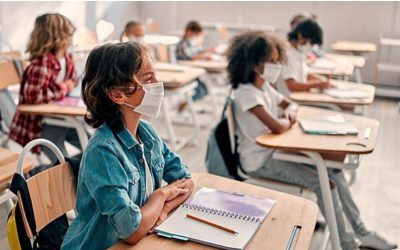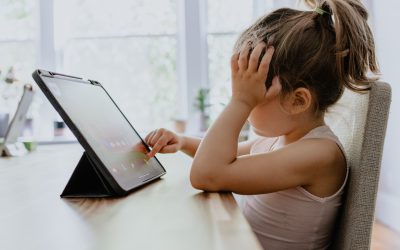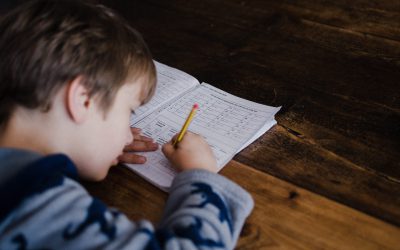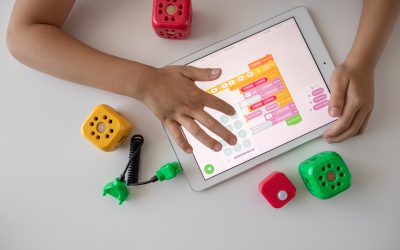COVID-19 Education news week May 25 – May 29
1 Jun 2020 | News
In this week’s education news:
- School principals in Primary Education in the Netherlands expect minimal learning loss but have more concerns over reduced teaching capacity when schools fully open.
- Half of the secondary schools in the Netherlands will prioritize vulnerable children for in-school education, while prioritizing teaching in core academic subjects.
- 38% of schools in secondary education will promote all students to the next grade, while 25% of schools will allow parents to make a decision on grade repetition of their child; the latter measure is discouraged by the Ministry of Education and council of secondary schools.
- We describe how Croatia quickly prepared distance learning during the school closure and how its Ministry of Education intends to integrate distance learning in regular schooling after the COVID-19 crisis.
- According to the World Bank, teachers need to be supported in three stages during and after the crisis: 1) coping to reduce learning loss while schools are closed ; 2 ) managing continuity; 3) using the crisis as an opportunity to improve and accelerate
- About 45 million students worldwide do not have access to distance learning.
Prof. Dr. Melanie Ehren & Rukiye Turkeli
01-06-2020


NEWS FROM THE NETHERLANDS
Update on the reopening of primary schools and special education & measures for the full opening
As we published in our news last week, a program of 224 million euros has been announced to develop context-specific interventions to remediate learning loss. However, the learning loss at most primary schools is expected to be minimal. A poll among 1000 school leaders shows that only 10% expect considerable learning loss. There are however more concerns over reduced teacher capacity, particularly when schools fully reopen. According to the poll, 55% of primary school teachers are out of school because of the Corona-virus and this well have an even larger impact on a school’s timetable when schools fully open on the 8th of June.
The council for Primary Education has developed adjusted protocols for regular primary education and special needs education as well as posters with hygiene guidelines for the full re-opening of primary schools.

The adjusted poster for primary schools for the opening for full classes and days, developed by the Ministry of Education and the council for Primary Education. Source: https://po.lesoptijd.nl/lesoptijd/weer-op-school/voorzorg measures/
Opening secondary education
The council for Secondary Education surveyed school leaders of secondary schools on how they will reopen their schools (n = 429 schools):
- Which students to prioritize: 50% of the secondary schools will prioritize school access for vulnerable children, followed by students with major learning difficulties (38%) and students with no access to an appropriate learning environment at home (34%). These students will come to school more than the current part-time schedule.
- Instructional time table: most schools will spend 52% of the available time in school on core academic subjects. 50% of the respondents will not make these available online.
- Availability of school staff: On average, 8% of all teaching staff do not work at school because they are unable to do and/or unwilling.
Grade repetition in secondary education
Next week, secondary schools will decide on which students will have to repeat a grade. The national newspaper, the Volkskrant shows that 38% of the 148 secondary schools will automatically promote all students this year. 15% of the schools will allow parents and pupils to decide. The latter is discouraged by the Ministry of Education and council for Secondary Education as it may promote inequality when high income parents push for grade transition. 41% of the schools will determine grade repetition on the basis of current test results.
INTERNATIONAL NEWS
Opportunities for the future , example from Croatia
The World Bank describes in its blog the positive experiences of schools in Croatia, where a full curriculum reform was already implemented for all schools in 2019. The reform focused heavily on providing schools with digital technology and equipment and improving digital competences of students and teachers. Digitization of schools and curricular reforms proved to be crucial in enabling the rapid transition to distance learning when schools had to close.
In addition, the Croatian Ministry is currently developing an action plan for the use of (online) distance learning under ‘normal’ circumstances. Some of these suggestions are to widen access to online learning for:
- Students who are temporarily unable to attend regular classes, for example due to illness;
- Talented students with substantial additional commitments in sports or music; or
- To temporarily bridge teacher shortages.
Supporting teachers during and after the COVID-19 crisis
The World Bank recommends to improve the skills of teachers and support them in the following three phases:
- Coping to reduce learning loss: in the first phase teachers need to quickly transition their lessons to online, remote forms. They should be provided with actionable guidance, become content curators and learn how to structure teaching so as not to overwhelm students.
- Managing Continuity: as online teaching progresses, teachers need to develop new skills where they capitalize on the uniqueness of online learning, rather than replicating traditional teaching online. Teachers must learn how to combine multiple models (blended learning) to effectively facilitate learning.
- Using the crisis as an opportunity to improve: ensuring education systems emerge stronger from the crisis requires more investment in teachers’ digital skills (such as in initial teacher training), development of online programmes and blended methods of teaching and learning. Such investments will lead to more equitable systems when technology is used to the advantage of all students.
UNESCO research on access to online education
About 45 million students worldwide do not have access to any form of distance learning alternatives since the closure of the schools, according to a recent research by UNESCO. For example, approximately 38 countries realized school closures without providing alternatives of distance learning (see Figure 1) .
Moreover, even when national distance learning alternatives are being deployed, access problems to the offered alternative have been assessed. As many as 465 million children and youth do not have access to the Internet at home. In addition, parents lack the requisite skills to facilitate home-based online learning of students.
Figure: Government-initiated distance learning solutions and intended reach

Source: UNESCO May 2020, see: https://gemreportunesco.wordpress.com/2020/05/15/distance-learning-denied/
Although it is too early to fully assess the effectiveness of the current global experience in distance learning during the period of school closures worldwide, according to UNESCO preliminary evidence on the dramatic scale of incomplete and inequitable reach of these alternatives is cause for concern. There is now arguably greater recognition that significant gaps, both in household connectivity, as well as in digital skills, must be urgently addressed if equal opportunity to online learning alternatives are to be ensured.
See also information for:
Most recent blogs:
How LEARN! supports primary and secondary schools in mapping social-emotional functioning and well-being for the school scan of the National Education Program
Jun 28, 2021
Extra support, catch-up programmes, learning delays, these have now become common terms in...
Conference ‘Increasing educational opportunities in the wake of Covid-19’
Jun 21, 2021
Covid-19 has an enormous impact on education. This has led to an increased interest in how recent...
Educational opportunities in the wake of COVID-19: webinars now available on Youtube
Jun 17, 2021
On the 9th of June LEARN! and Educationlab organized an online conference about...
Homeschooling during the COVID-19 pandemic: Parental experiences, risk and resilience
Apr 1, 2021
Lockdown measures and school closures due to the COVID-19 pandemic meant that families with...
Catch-up and support programmes in primary and secondary education
Mar 1, 2021
The Ministry of Education, Culture and Science (OCW) provides funding in three application rounds...
Home education with adaptive practice software: gains instead of losses?
Jan 26, 2021
As schools all over Europe remain shuttered for the second time this winter because of the Covid...





